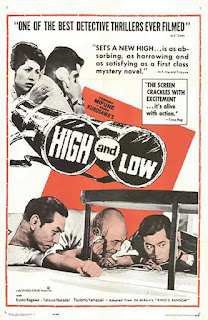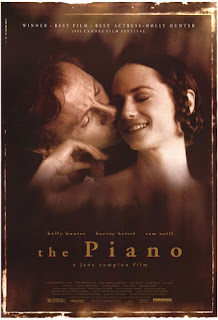November 17th: HIGH AND LOW (Akira Kurosawa, 1963)
A wealthy executive is threatened with a hostile takeover as well as a kidnapping plot.
Akira Kurosawa achieved a level of global recognition greater than any of his fellow Japanese directors, with a career that began during World War II and broke through on the international level with the release of his 1950 film Rashomon, a winner of the top prize at the Venice Film Festival as well as the Academy Award for Best Foreign Language film. Two years later he had another huge success with the action epic The Seven Samurai, and for the rest of the decade alternated between historical action films and various literary adaptations.
After 1960's The Bad Sleep Well (a loose retelling of Shakespeare's Hamlet in a modern corporate setting), Kurosawa revisited a similar setting for an Hollywood-style pulp crime thriller, adapted from a novel by American writer Ed McBain. Thematically he was interested in exploring the cutthroat business practices prevalent in post-war Japan, the prominent class division, as well as protesting the light sentences handed out to convicted kidnappers.
Starring is Kurosawa's longtime collaborator Toshiro Mifune, in his 15th of 16 films for the director. The cast includes Tatsuya Nakadai (a veteran of films by Kobayashi, Naruse, Teshigahara, and Ichikawa), and Kyoto Kagawa (Ozu's Tokyo Story).
Kurosawa experiments with narrative structure by setting most of the first half of the film in the living room of the executive's house. Managing up to 10 actors in the scene, it's a masterclass of blocking and framing. The story makes a sharp turn in the middle with a famous set piece shot on a bullet train, utilizing 6 cameras and real-life passengers as extras, with a more intense and fast-paced editing and shooting style. The second half of the film blends a police procedural and criminal character study in the "lower depths" of Tokyo's underworld.
The contrast between rich and poor, the refined and the sordid, lives up to the film's Western title as well as the literal translation of the Japanese, "Heaven and Hell". Kurosawa wrestles with ethical and moral questions while blending the bleakness American noir aesthetic with his own local commentary.
While a huge success in Japan, it received mixed reviews overseas, and failed to replicate the crossover appeal of Kurosawa's previous hits. In the intervening years it has been reappraised and is now considered an important entry in his filmography.
Running time is approx. 2 hrs, 20 min.










Comments
Post a Comment